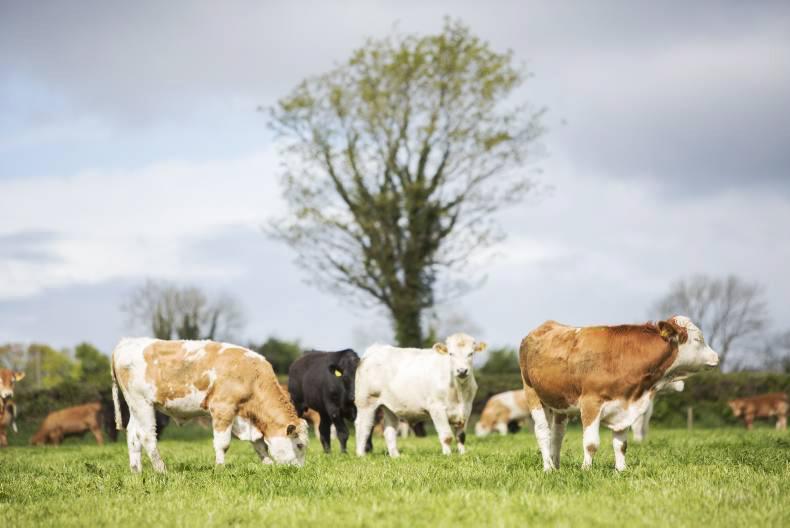As predicted, Minister for Agriculture Simon Coveney announced the opening of the second tranche of the Green Low-Carbon Agri-Environment (GLAS) scheme at the National Ploughing Championships last week, with an opening date of 12 October.
A lack of trees for both planting new hedgerows and traditional apple orchards was the reason two popular measures have been suspended under the second tranche of GLAS, according to the Department at the Ploughing.
The other major change was that low-input permanent pasture (LIPP) was cut from a maximum of 10ha to just 5ha. This was simply to curtail the total budget spent on the measure. With over 180,000ha applied for under LIPP in the first tranche, it means 20%, or €50m of the €250m yearly GLAS budget, is already allocated to farmers who applied for this measure under the first tranche.
It quickly became obvious that the changes to the scheme will make it more difficult for lowland farmers to get even close to the €5,000 maximum under the scheme.
The bigger question is will farmers under Tier 3 get in at all? When applying to the EU, the Department set a target that over 30,000 farmers would enter Tier 1 of the scheme, with the remaining 20,000 spaces allocated to farmers in Tier 2 and Tier 3.
In the first tranche of the 27,000 who applied, just 11,000 farmers entered under Tier 1. There were 6,000 under Tier 2 and 10,000 under Tier 3.
The biggest disappointment last time around was that less than 4,000 commonage farmers joined the scheme. The Department originally set a target of getting 12,000 to 13,000 commonage farmers for the scheme and are hopeful that over half of the 10,000 places will be filled by commonage farmers this time around.
There now appears to be a greater understanding of the schemes among commonage advisers and farmers, although many farmers with small commonage shares will be hit by the new changes to the criteria. The Department has also appointed advisers to 2,100 commonages, with another 200 commonages to be allocated advisers in the coming week. Farmers will receive letters as to who their commonage adviser is shortly.
The Department also expects farmers who have areas under bird habitats to join in larger numbers. It has been made easier for farmers, who can now leave up to 50% of their area out of the strict requirements. They have also reduced the closed period by six weeks from 15 October to 31 March for geese and swans. Organic farmers and those with rare breeds or farming in SAC/SPA will also have a high chance of gaining access under Tier 1 this time around.
Another group categorised as Tier 1 are intensive farmers (dairy, beef, sheep farms) who can also qualify for priority access if they have a whole-farm stocking rate of over 140kg N/ha, or tillage farmers can qualify if they have more than 30ha of arable crops,
Another small change in the scheme was to reduce the length of coppicing hedges from 1,000m to 750m to redcue the total area submitted in this measure. Changes were also made to the planting date for hedges and orchards, extending it to 31 October to give farmers more time to source trees.
Interest
With limited places likely for Tier 3 farmers, advisers are reporting an increased interest in the measures that would boost application into Tier 2 status. These include wild bird cover and low emission slurry spread on lowly stocked livestock farms and minimum tillage or establishing catch crops for tillage farmers with less than 30ha.
The Department has not ruled out changes to its point ranking system to ensure targets are met for all the different measures. This matrix will be made available before the opening date on 12 October for a six-week period. Farmers who applied in the first tranche will get their approval letters after this date
A third GLAS tranche is expected to open for the remaining places in early summer 2016. The big question is will there be many places for Tier 3 farmers at that stage.
Water down
IFA Rural Development chairman Flor McCarthy has accused the Minister for Agriculture Simon Coveney of trying to water down GLAS by his attempt to exclude many farmers in the second phase of the scheme, and taking out some key measures as well as reducing the impact of others.
McCarthy said while the opening of the scheme in early October “is to be welcomed, nevertheless, making the scheme available to 10,000 farmers is a major disappointment and will lead to the exclusion of many farmers from the scheme. It is clear if the Minister persists with this number that the scheme will only take in Tier 1 farmers at the exclusion of both Tier 2 and Tier 3 farmers. Minister Coveney must revisit this before the scheme is open and allow 20,000 farmers in the next phase of the scheme”.
ICSA Rural Development chair Bill Gray said he is “strongly opposing any downgrading of the LIPP measure in the latest round of GLAS. Mr Gray said that this measure was absolutely vital for low income cattle and sheep farmers and proposals to cut the maximum area from 10ha to 5ha would undermine the viability of GLAS for many farmers”.






 This is a subscriber-only article
This is a subscriber-only article










SHARING OPTIONS: